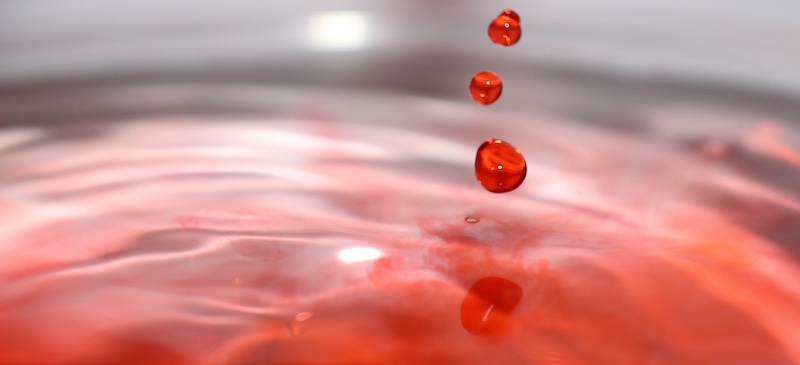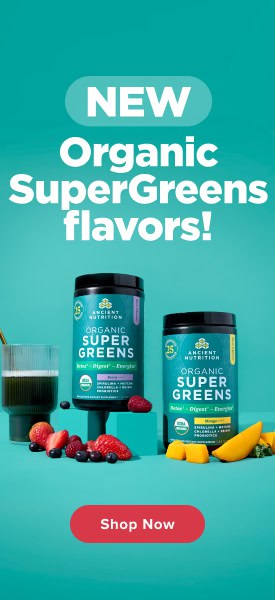This Dr. Axe content is medically reviewed or fact checked to ensure factually accurate information.
With strict editorial sourcing guidelines, we only link to academic research institutions, reputable media sites and, when research is available, medically peer-reviewed studies. Note that the numbers in parentheses (1, 2, etc.) are clickable links to these studies.
The information in our articles is NOT intended to replace a one-on-one relationship with a qualified health care professional and is not intended as medical advice.
This article is based on scientific evidence, written by experts and fact checked by our trained editorial staff. Note that the numbers in parentheses (1, 2, etc.) are clickable links to medically peer-reviewed studies.
Our team includes licensed nutritionists and dietitians, certified health education specialists, as well as certified strength and conditioning specialists, personal trainers and corrective exercise specialists. Our team aims to be not only thorough with its research, but also objective and unbiased.
The information in our articles is NOT intended to replace a one-on-one relationship with a qualified health care professional and is not intended as medical advice.
FDA Bans Red Dye No. 3 from Foods, Drinks & Ingestible Drugs
January 15, 2025

In a landmark decision, the U.S. Food and Drug Administration (FDA) banned the use of red dye No. 3 in food, drinks and ingested drugs across the United States. This move marks a significant step in addressing growing concerns over the safety of synthetic food colorants.
Red dye No. 3 has been a topic of heated debate for decades, with mounting evidence pointing to its potential health risks.
So what is red dye No. 3? Keep reading to learn about its associated dangers, where can be found and practical tips for avoiding food dyes in your diet.
FDA red dye No. 3 ban
The FDA’s decision to ban red dye No. 3 follows years of scientific research and advocacy from consumer health groups, such as the Environmental Working Group (EWG) and the California Assembly’s Committee on Health. (California put a ban on red dye No. 3 and other substances in 2023.)
In fact, as EWG noted in its press release about the news, EWG, the Center for Science in the Public Interest, the Center for Food Safety and other public health groups petitioned the FDA to ban red dye No. 3 in 2022.
Studies have linked the dye to potential health risks, including cancer and behavioral issues in animals. In fact, it’s been banned for use in cosmetic products and topical drugs since 1990 in the U.S.
Red dye No. 3, also known as erythrosine, has been used in a wide array of products since then, however, ranging from candies and baked goods to medications and supplements. By removing it from consumable goods, the FDA aims to protect public health and encourage safer alternatives.
“Today’s action by the FDA marks a monumental victory for consumer health and safety,” said Ken Cook, president and co-founder of EW. “For years, Red 3 remained in food products, despite growing evidence linking it to health problems, particularly in kids.
“This ban sends a strong message that protecting the health of Americans – especially vulnerable children – must always take priority over the narrow interests of the food industry.”
Companies that use red dye No. 3 have until Jan. 15, 2027 to remove it from foods and Jan. 18, 2028 to remove it from ingested drugs.
What is red dye No. 3?
Red dye No. 3, or erythrosine, is a synthetic food coloring made from petroleum. It has been used for decades to give foods and other products a bright red hue.
Approved by the FDA in 1969, erythrosine has been a staple in processed foods and ultra-processed foods, especially those targeting children. Its vibrant color makes it particularly appealing in candies, desserts and beverages.
However, its synthetic origins and chemical composition have raised questions about its safety.
Dangers
Scientific studies have identified several potential dangers associated with red dye No. 3.
1. Cancer risk
Research conducted in the 1980s linked red dye No. 3 to thyroid tumors in laboratory animals. While direct evidence in humans is limited, the findings were significant enough to prompt calls for regulatory action.
More evidence has arisen since. For instance, in lab studies, it’s been found to have DNA-damaging activity in human breast cancer cells, potentially increasing the risk of breast cancer.
More animal studies have discovered alarming associations between erythrosine and cancer.
2. Behavioral issues
Some studies have suggested that synthetic food dyes, including red dye No. 3, may exacerbate hyperactivity and attention issues in children, particularly those with ADHD. These findings have been duplicated across several studies.
This has also been shown in animal research.
3. Allergic reactions
Red dye No. 3 can cause allergic reactions in sensitive individuals, leading to symptoms such as skin rashes, hives or gastrointestinal discomfort.
4. Hormonal disruption
Preliminary studies have indicated that erythrosine may interfere with hormone levels, particularly thyroid hormones, though more research is needed to confirm this.
It is important to note that most of the research on the dangers of red dye No. 3 and other synthetic food dyes has been conducted on animals, and more human trials are needed to fully confirm and understand these potential dangers.
Where it’s found
Red dye No. 3 has been a common ingredient in:
- Candy: Gummies, lollipops and hard candies often use red dye No. 3 for vibrant colors.
- Baked Goods: Frostings, cake mixes and pastries.
- Beverages: Fruit punches and some sodas.
- Medications and Supplements: Coated tablets and chewable vitamins.
- Cosmetics: Though not ingested, red dye No. 3 has been used in some lipsticks and blushes, though it’s been banned for cosmetic use in the U.S. since 1990.
As CNN reported, “Red dye No. 3 is found in at least dozens of candy, food and beverage products, but some of the most popular brands either never used, or have already stopped using, the additive. Fewer than 10% of products made by the candy company Ferrara, which produces Brach’s candies, for example, contain the additive, as the company began phasing out the use of it in early 2023, a Ferrara spokesperson said via email.”
How to avoid food dyes
If you’re concerned about synthetic food dyes, here are some practical tips for avoiding them:
- Read Labels: Check ingredient lists for terms like “erythrosine” or “Red 3.”
- Choose Natural Alternatives: Look for products colored with natural ingredients, like beet juice, turmeric or spirulina.
- Opt for Whole Foods: Minimally processed foods are less likely to contain artificial dyes.
- Support Transparent Brands: Many companies now produce dye-free versions of popular products. Look for brands that prioritize clean labels.
- Cook at Home: Preparing meals and snacks at home allows you to control the ingredients and avoid unnecessary additives.
Conclusion
- The FDA’s ban on red dye No. 3 represents a crucial step toward safer food and drug practices.
- While the decision reflects growing awareness of the potential risks posed by synthetic food dyes, it also highlights the importance of making informed choices as consumers.
- By understanding what red dye No. 3 is, recognizing its dangers and taking steps to avoid artificial dyes, you can prioritize your health and well-being.
- As the food industry adapts to this regulatory change, we can look forward to a future with safer, more natural alternatives.




